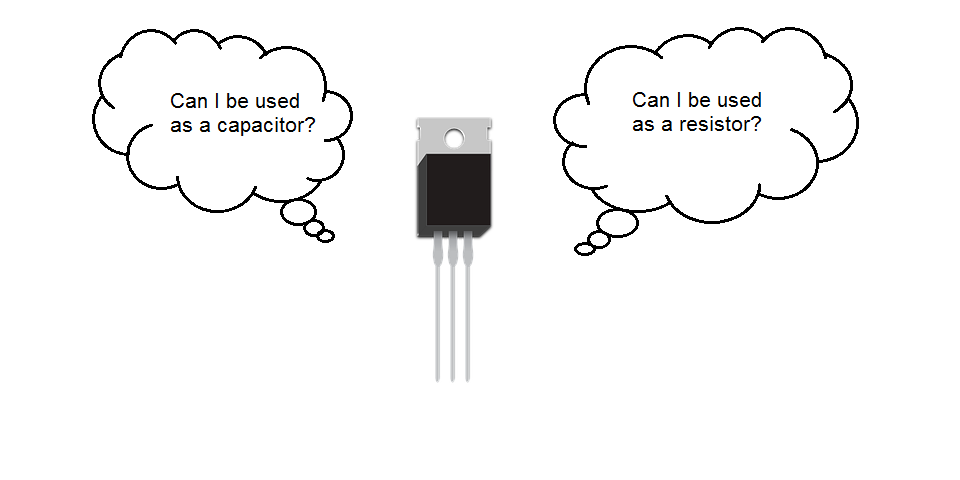The electrical and electronic world is filled with many important components which include resistors, capacitors, inductors, etc.
Another component not mentioned above but very important in many electrical and electronic circuits is the MOSFET.
But, what can a MOSFET be used as? A MOSFET is primarily used as a switch, but can also be used as a variable resistor, diode, capacitor, relay and amplifier.
This article shall take a closer look at how the MOSFET is used with these different functionalities.
A deeper look at the MOSFET
Before we can discuss the different functionalities a MOSFET can be used as, it will help to first learn a bit more about it.
So let’s take a closer look.
MOSFET is an acronym which stands for; Metal Oxide Semiconductor Field Effect Transistor.
It is a three terminal device consisting of the Source (S), Gate (G), Drain (D).
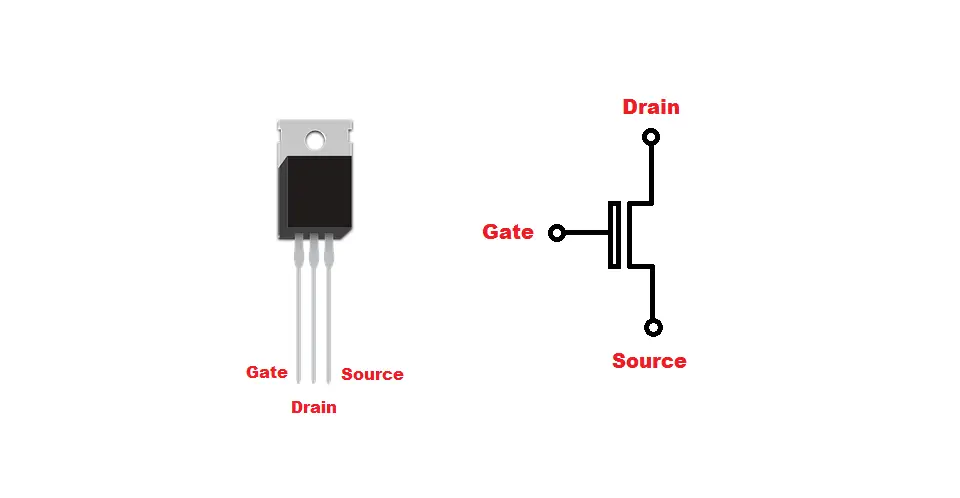
Types of MOSFET
MOSFETs have many variations which is summarised in the flowchart below.

The symbols for each type of MOSFET is shown in the figure below
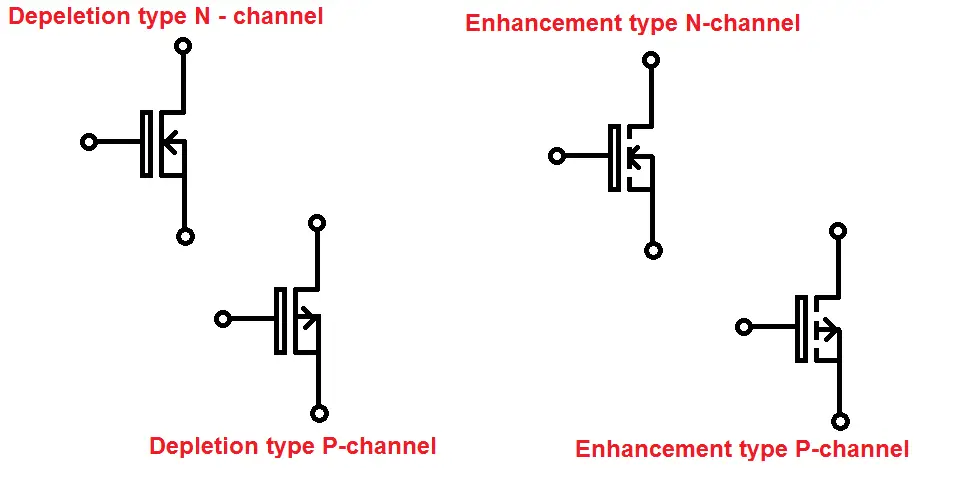
Construction of a MOSFET
The MOSFET has a very similar construction to one of its close peers, the FET (field effect transistor). It is made up of a semiconducting material.
Below is an image that shows the basic construction of the MOSFET.
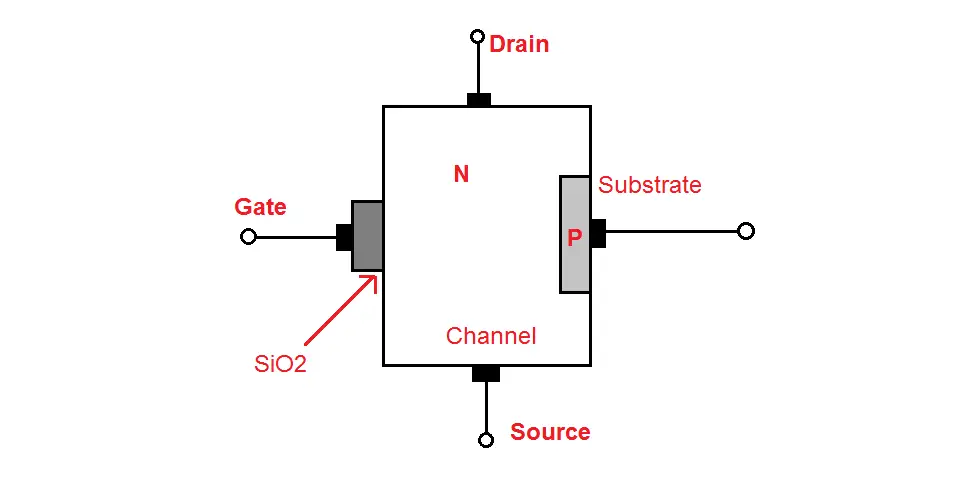
The Gate terminal is connected to a substrate where an oxide layer is placed. The purpose of the oxide layer is to act as an insulator.
The general construction of a MOSFET consists of a lightly doped substrate which is diffused by a heavily doped region and the substrate used ultimately determines whether it is a P-type or N-type MOSFET.
As we saw above, MOSFETs are either Enhancement or Depletion.
N-Channel Enhancement MOSFET
The source and drain in a N-Channel Enhancement MOSFET consist of a N-type semiconductor which is heavily doped and the substrate is a P-type semiconductor. Electrons are the main charge carriers.
P-Channel Enhancement MOSFET
On the other hand, the source and drain of P-Channel Enhancement MOSFETs are of a P-type semiconductor which is heavily doped, and the substrate is a N-type semiconductor. Holes are the major carriers here.
In enhancement mode, the source and drain are isolated.
N-Channel Depletion MOSFET
In N-channel depletion MOSFETs the source and drain are connected by a small strip of material that is a semiconductor of N-type. The substrate is a P-type semiconductor.
The main charges are electrons while the source and drain are heavily doped.
P-Channel Depletion MOSFET
The P-channel depletion MOSFET is the opposite of the N-channel, as the strip of semiconducting material connecting the source and drain is P-type. The substrate is N-type.
The main carriers are holes.
Working principle of a MOSFET
While there are different types of MOSFET, their main function remains the same which is to act as a switch.
The main operation goes a little something like this; when a voltage is applied at the Gate (which exceeds Vgs) of the MOSFET, the path between Source and Drain closes allowing current to flow through.
Vgs is the minimum amount of voltage required to turn the MOSFET “ON” also known as threshold voltage.
There are some slight differences in the operation of Enhancement and Depletion MOSFETs, but their overall functionality remains the same.
Areas of operation of a MOSFET
Knowing the different regions of operation will greatly help us understand the different functions that the MOSFET can be used as.
The three major areas of operation of a MOSFET include;
- Cut-Off region
- Saturation Region
- Linear/Ohmic Region
Cut-off region
When the MOSFET is in the cut-off region the device is considered to be in its ‘OFF’ state. When it is OFF, no current flows through it.
Just like when a mechanical switch is open and stops the flow of current as well.
Saturation region
Saturation is when the current flow through the MOSFET is a constant value. In this region it behaves like a closed switch allowing current to flow freely.
This occurs when the voltage across the drain and source exceeds the threshold voltage (Vgs).
Linear/Ohmic region
Last but not least is the Linear/Ohmic region.
In this region of operation, an increase of voltage across the drain and source sees an increase in current through the MOSFET as well.
What a MOSFET can be used as
Now that we have covered a little bit of the basics of the MOSFET, let’s dive into its different functionalities.
What a MOSFET can be used as: Switch
The first main function that a MOSFET can be used as is the humble Switch.
What is a switch?
A switch is a device used for making or breaking a connection within an electric or electronic circuit.
When the switch is ‘OPEN’, no current can flow through the circuit. The circuit is said to be ‘OFF’.
When the switch is ‘CLOSED’, current can now flow through the circuit powering whatever load is connected. The circuit is said to be ‘ON’.
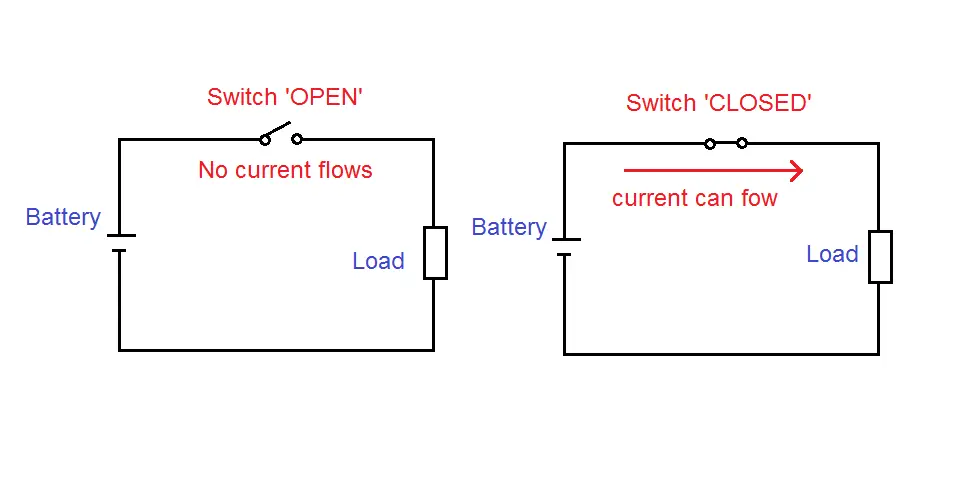
How does the MOSFET function as a switch?
Here is how a switch behaves.
When a MOSFET is in the cut-off region, no current can pass through it (just like a switch when it is OPEN). But, when it is in the saturation region, current can freely flow (just like when a switch is CLOSED).
So, in the cut-off region it is effectively OPEN inhibiting the flow of current, and in the saturation region it is CLOSED allowing the current to flow just like a switch.
What a MOSFET can be used as: Variable resistor
Resistors are one the most common and essential components in the electrical and electronic world.
They are a passive component which add resistance to a circuit thereby limiting the flow of current (not stopping it, but limiting it).
The higher the resistance, the less current can flow, and vice versa.
A variable resistor is a type of resistor which has the ability to vary its resistance (using either a knob, or slider). Current is varied as the resistance of the variable resistor is altered.
Variable resistors have their own added applications in circuits.
The next major function of a MOSFET is its ability to be used as a variable resistor.
We learnt that in the Linear/Ohmic region that the voltage across the source and drain controls the amount of current flow.
This is essentially what we need if we want the MOSFET to function as a variable resistor as we are able to limit the current using voltage.
What a MOSFET can be used as: Diode
The next function that a MOSFET can be used as is a Diode.
A Diode is a semiconducting device which only allows current to flow in one direction. Just like a one way street allows motorists to travel in one direction and not the other.
It provides low resistance in one direction, and has a high resistance in the other.
To imitate a diode, the Gate terminal of the MOSFET is connected to the Drain.
In this configuration the MOSFET functions as a Diode with similar characteristics to that of a PN-Junction Diode.
What a MOSFET can be used as: Capacitor
Another common and important component that you will find in almost all electronic circuits is a Capacitor. .
A capacitor is a two terminal passive device which stores electrical energy in the form of an electrical field.
They consist of two conducting plates which are close to each other separated by an insulator (air, plastic, mica, etc).
The amount of electrical energy it is able to hold is determined by its capacitance which has the units of Farads (F).
In the ‘OFF’ state, the MOSFET is essentially a capacitor as it has to conducting plates separated by an insulator (in this instance SiO2 ).
However its capacitance won’t be as high as the surface area (which plays a big part on the amount of capacitance) of the conducting plates won’t be as high.
Varying the voltage at the gate of the MOSFET below the threshold voltage will change the thickness of the non-conductive gap which helps to create a voltage controlled capacitor.
What a MOSFET can be used as: Relay
Some applications require an isolation between the logic/control circuit and the load circuit. This is due to the fact that the load circuit might be subject to higher currents which could damage components and devices in the control circuit.
A relay is an electrically operated switch that enables the separation of two separate circuits.It allows you to link different signal levels and different potentials without any issues.
The opening and closing of circuits comes in the form of metallic contacts which are opened and closed using an electromagnet contact.
MOSFETs operate in a very similar fashion to a relay. While relays provide a mechanical means of isolation, MOSFETs provide electrical isolation.
MOSFETs can operate high currents between source and drain without affecting the control circuit which the gate is connected to.
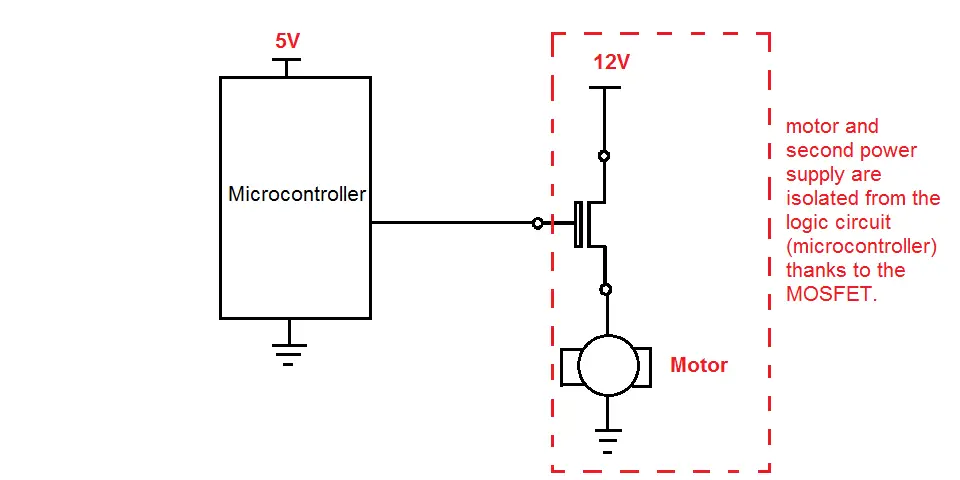
They are commonly used as solid state relays.
What a MOSFET can be used as: Amplifier
Amplifiers are aptly given their name due to the fact that they can ‘amplify’ either voltage, current or power of a signal.
They take a weak signal and amplify it to make it more powerful.
Due to their high input impedance, MOSFETs are a great choice for creating small signal linear amplifiers. In order to perform like an amplifier, it needs to operate in the saturation region.
The conductive region with the MOSFET can be increased or decreased by varying the gate voltage.

